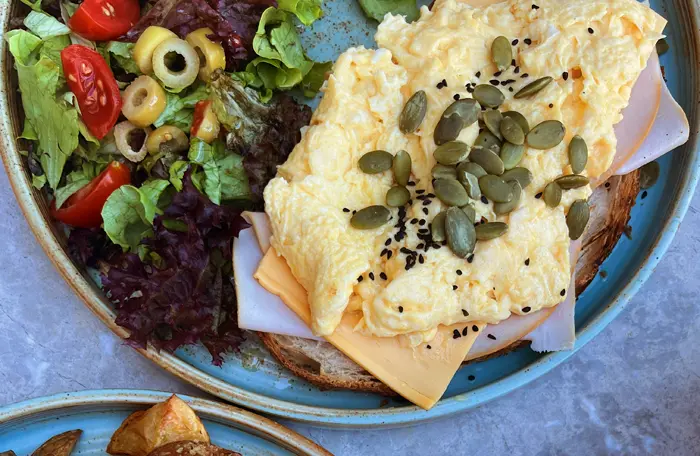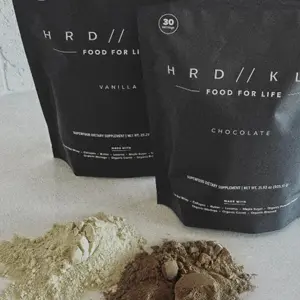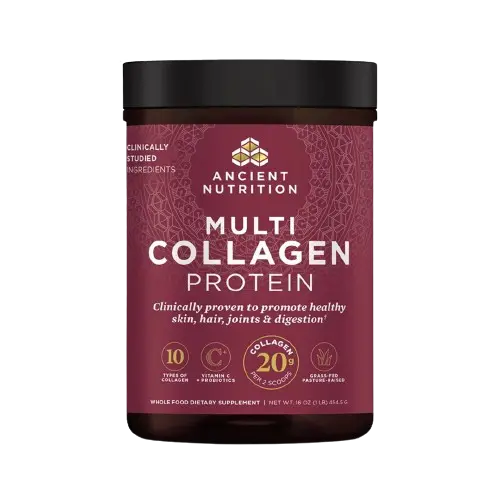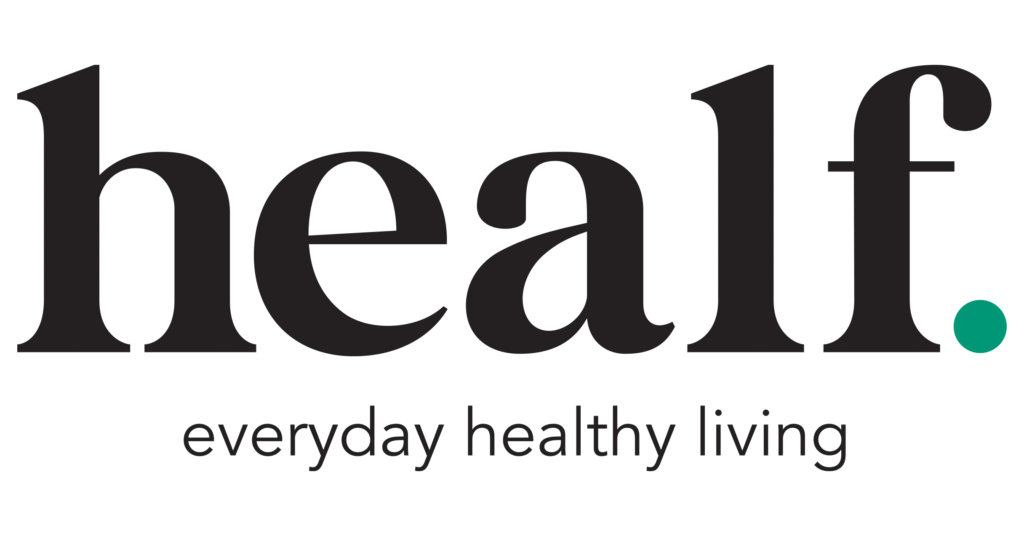This post contains affiliate links. Read my full diclosure HERE.

In recent years, protein has gained considerable attention as a crucial nutrient for overall health, especially in women. While many of us might associate protein with muscle building, its benefits go far beyond that.
For women, protein is essential for balancing hormones, maintaining muscle mass, supporting metabolism, and even promoting healthy skin and hair. But are you getting enough?
In this article, we’ll dive into why high-protein meals are key to women’s health, how much you should be aiming for, and how to easily incorporate more protein into your diet.
Why Protein is Crucial for Women’s Health
When we talk about protein, we’re referring to one of the three main macronutrients (along with fats and carbohydrates) that our bodies rely on for energy, growth, and repair. But protein stands out because it’s made up of amino acids—the building blocks of everything from your muscles to your skin, hair, and even your hormones.
Unlike carbs and fats, which the body can store for later use, protein is constantly being broken down and rebuilt throughout the day. That means you need a steady intake of protein to replenish what your body is using.
Your muscles, bones, skin, and hair all depend on a regular supply of protein to function optimally. Without enough, the body starts pulling from its own resources, which can lead to fatigue, weakened muscles, and even hormone imbalances.
So, it’s not just about getting enough fuel—protein is key to ensuring your body has the materials it needs to repair, rebuild, and stay strong.
Here are several aspects of a woman’s health where protein plays a pivotal role:
♦ Hormonal Balance: Protein is key to regulating blood sugar levels, which directly impacts the balance of hormones like insulin, estrogen, and progesterone. Maintaining these levels is crucial for energy, mood, and reproductive health. When your blood sugar levels are balanced, you avoid the spikes and crashes that can trigger hormonal imbalances.
♦ Muscle Maintenance and Strength: As women age, they naturally lose muscle mass. Protein is essential in preventing this muscle loss and maintaining strength, especially for active women or those entering their 30s and 40s. Consuming protein after a workout also helps with muscle recovery, allowing you to stay active and build lean muscle.
♦ Metabolism and Weight Management: Protein increases the thermic effect of food, meaning your body burns more calories digesting protein compared to fats or carbohydrates. This boost in metabolism can support weight management, making it easier to maintain a healthy weight while preserving muscle mass.
♦ Bone Health: Women are more susceptible to osteoporosis as they age, but protein can play a preventive role. Studies show that adequate protein intake supports bone density and strength, helping to reduce the risk of fractures.
♦ Improved Skin and Hair: Protein supports collagen production, a protein that keeps your skin firm, smooth, and youthful. It also helps maintain healthy, strong hair, which is especially important for women concerned with hair thinning or loss.
♦ READ NEXT: Top 10 Benefits of Collagen Powder for Youthful Skin
How Much Protein Do Women Really Need?
So, how much protein is enough?
The general guideline for protein intake, known as the recommended dietary allowance (RDA), suggests that the average sedentary adult needs about 0.8 grams of protein per kilogram of body weight per day. For context, that works out to around 46 grams a day for a woman who weighs 130 pounds (approximately 60kg).
But here’s the catch: this recommendation is considered quite conservative, especially for women who are more active or trying to build muscle, maintain strength, or balance their hormones.
Recent research suggests that this amount may be too low for optimal health, particularly for women who work out regularly or have a busier lifestyle. For these women, it’s better to aim for a daily protein intake closer to 100 grams or more. This higher intake not only helps with muscle recovery and metabolism but also provides the body with the fuel it needs to support overall well-being—think clearer skin, better energy, and more stable moods.
Also, from a functional nutrition perspective, protein intake should be personalized. If you lead a very active lifestyle or are pregnant or breastfeeding, your protein needs may be higher. On the other hand, women with a more sedentary lifestyle or certain health conditions might need to adjust their intake accordingly. Either way, it’s clear that prioritizing protein at each meal can be a game changer for long-term health.
Signs of Protein Deficiency
If you’re not getting enough protein, you may notice symptoms such as fatigue, frequent sugar cravings, hair thinning, and difficulty building or maintaining muscle.
Recognizing these signs early can prompt you to make changes that will improve your overall wellness.
The Role of Protein in Reducing Cravings and Sugar Addiction
One of the most compelling benefits of protein is its ability to stabilize blood sugar levels. This stabilization plays a crucial role in reducing cravings, particularly for sugary foods. When your blood sugar levels are out of balance, you’re more likely to experience intense sugar cravings, making it difficult to stick to a healthy diet.
♦ READ NEXT: 10 Easy Steps to Quit Sugar and Break Addiction
One of the key steps to quitting sugar is to incorporate more protein into your diet. Protein helps you feel fuller for longer, reducing the likelihood of reaching for sugary snacks to combat energy slumps. By eating more protein-rich meals, you can curb those cravings and maintain steady energy levels throughout the day.
Easy Ways to Increase Protein Intake
Now that we’ve established the importance of protein, how can you incorporate more of it into your daily meals?
High-Protein Meals: For breakfast, consider a protein-packed smoothie or a quick scrambled egg with vegetables. Lunches and dinners can include lean proteins like chicken, turkey, or plant-based alternatives like lentils or quinoa.
Protein-Rich Drinks: If you’re short on time, protein drinks are an excellent option. You can easily incorporate a scoop of protein powder into a Healthy Cacao Drink or Mushroom Coffee. These drinks not only offer the convenience of a quick, nourishing option but also include adaptogens for an extra wellness boost.
Snacks On-the-Go: Keep protein-packed snacks handy for busy days. A handful of nuts, boiled eggs, or a protein bar made from clean ingredients can keep your energy levels stable between meals.
Protein-Rich Foods to Include in Your Diet
When planning meals, focus on a variety of protein-rich foods:
Animal-Based Proteins: Chicken, fish, turkey, eggs, and dairy are all excellent sources of high-quality protein. They provide all essential amino acids that the body needs for optimal function.
Plant-Based Proteins: For plant-based eaters, include foods like lentils, beans, quinoa, and tofu in your meals. These can easily be incorporated into salads, soups, or stews, and provide a great source of protein for vegans and vegetarians.
Supplements: If you find it difficult to meet your protein needs through whole foods, consider incorporating a high-quality protein powder. Options like whey, collagen, or plant-based powders (pea or hemp) can be added to smoothies or baked goods for an extra boost.
My Go-To High-Protein Recipes: Easy & Nourishing for Every Day
When life gets busy, it can be challenging to meet your protein goals, but I’ve found that even the simplest recipes can be both nourishing and satisfying. I often turn to these two go-to options I want to share, because they are quick to prepare, packed with protein, and offer the perfect balance between delicious and healthy.
You don’t need anything complicated to fuel your body—just a few wholesome ingredients that come together to provide the nutrients you need to thrive.
First one is a protein-rich breakfast that combines eggs, cottage cheese, and seeds to give you a well-rounded meal. It’s quick to make and packed with nutrients that keep you full and energized:
♦ Scramble with Cottage Cheese and Seeds ♦

- 2 large eggs (~12 grams of protein)
- ½ cup (120g) cottage cheese (~14 grams)
- 1 tbsp pumpkin seeds (~3 grams)
- 1 tbsp hemp seeds (~3 grams)
- 1 tsp olive oil or ghee (for cooking)
- Salt and pepper, to taste
Heat a skillet over medium heat and add the olive oil or ghee.
Crack the eggs into the pan, scramble them gently as they begin to cook.
When the eggs are halfway cooked, add the cottage cheese and stir until everything is combined.
Sprinkle the pumpkin and hemp seeds on top, and season with salt and pepper.
The second one is warming cacao drink that combines protein powder with a creamy base of your choice of milk and the benefits of cacao and adaptogens, making it a comforting and nourishing option, especially for autumn evenings:
♦ Cozy Protein Cacao Latte ♦

- 1 scoop protein or collagen powder (about 20g of protein)
- 1 tbsp raw cacao powder
- 1 cup (240ml) cow’s milk (~8 grams of protein)
- 1 tsp cinnamon
- 1 tsp ashwagandha powder
- 1 tsp honey or maple syrup (optional)
Heat the milk in a small pot over medium heat until it’s warm (but not boiling).
In a mug, whisk together the cacao powder, protein or collagen powder, cinnamon, nutmeg, and ashwagandha if using.
Slowly pour in the warmed milk, whisking until smooth and combined.
Sweeten with honey or maple syrup if desired, and enjoy while warm.
Conclusion
Prioritizing protein is one of the most effective ways to support women’s health. Whether your goal is to balance hormones, build muscle, manage weight, or simply maintain steady energy levels throughout the day, eating high-protein meals can make all the difference. By incorporating 30 grams of protein into each meal, you’ll feel more satisfied, reduce sugar cravings, and set yourself up for long-term health.
Note: Always consult with your medical professional before making any health-related decisions or implementing significant changes to your diet.
Let's connect
Sign Up for news and special offers
+ get our FREE guide!
Thank you!
You have successfully joined our subscriber list.
Check your email!





